Table of Contents
How We Grow Microgreens: Unlocking Health and Sustainability
I've been captivated by the recent surge in popularity of microgreens, these tiny culinary wonders that have taken the food world by storm. Their extraordinary flavors and remarkable nutritional value have won over chefs, home cooks, and health enthusiasts alike. I've often found myself curious about the intricate process of growing these miniature powerhouses. So, I decided to embark on a journey to immerse myself in the world of microgreen cultivation.
As I delved deeper into this fascinating world, I discovered a plethora of benefits associated with growing microgreens how to grow. Not only do they offer exquisite flavors that can elevate any dish, but they also pack a nutritional punch that's hard to beat. The journey of growing microgreens and sprouts turned out to be an exploration of both art and science, with sustainability at its core.
Through this comprehensive guide, I aim to share my newfound knowledge and experiences with you, as we unravel the secrets behind successfully cultivating these delightful greens. Join me on this journey as we uncover the steps, practices, and insights that can help us learn how to grow microgreens at for our health and the sustainability of our planet.
What Are Microgreens?
Microgreens are a fascinating culinary ingredient that showcases the beauty of nature's small wonders. These tiny plants are the result of harvesting young, edible greens at the very early stages of their growth. Unlike sprouts, microgreens are grown in soil, which provides them with the opportunity to develop complex flavors and significantly enhance their nutrient content.
These miniature marvels typically reach only a few inches in height, making them a delightful intermediary between sprouts and fully mature greens in the world of gastronomy. They come in a diverse range of flavors, colors, and textures, and their popularity has been on the rise in recent years due to their exceptional taste and nutritional benefits.
Microgreens are not only aesthetically pleasing additions to dishes but also pack a nutritional punch, making them a favorite among chefs and health-conscious individuals alike.
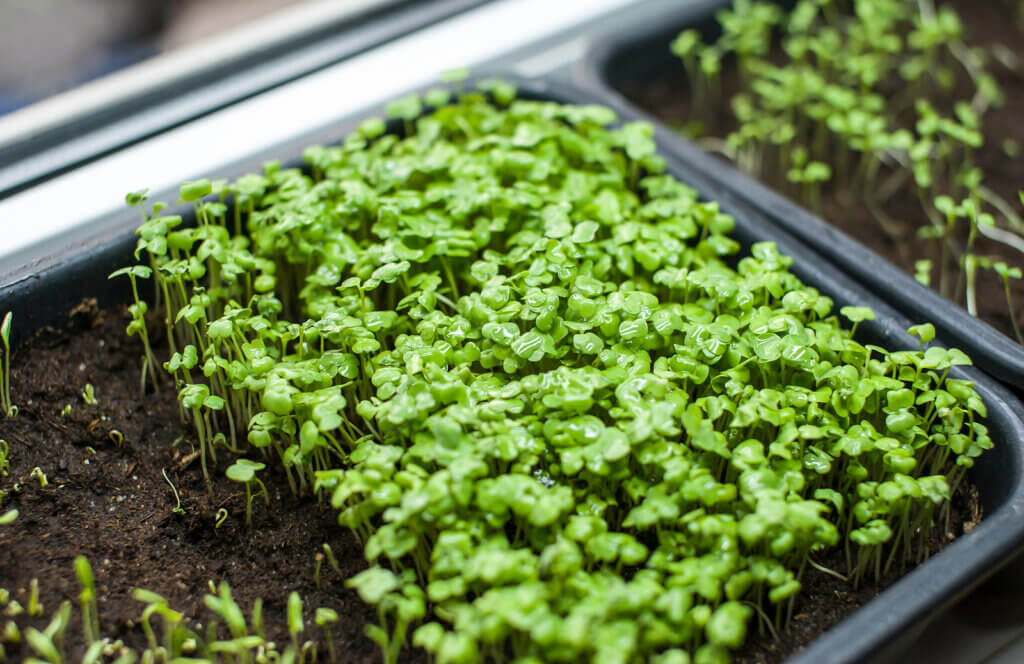
Why Microgreens?
Microgreens are more than just their petite size; they offer a multitude of compelling reasons to embark on a journey into microgreen cultivation:
- Nutrient Density: Microgreens are nutritional powerhouses. They contain up to 40 times more nutrients than their fully mature counterparts, making them a superb addition to any diet. Packed with vitamins, minerals, and antioxidants, they contribute to overall health and well-being.
- Flavor Explosion: Microgreens deliver a culinary adventure with a wide range of flavors. From spicy and peppery arugula to the nutty richness of sunflower microgreens, they elevate the taste profile of salads, sandwiches, and various dishes. Their versatility allows for creative and flavorful culinary experimentation.
- Quick and Easy: Growing microgreens is a low-maintenance endeavor that's perfect for beginners. Unlike traditional gardening that may take months to yield results, microgreens are ready for harvest in as little as 1-2 weeks. This quick turnaround time is perfect for those who crave fresh greens year-round.
- Space-Efficient: Microgreens are a boon for urban gardeners or anyone with limited gardening space. They thrive in small containers, on windowsills, or in compact gardens, making them accessible to individuals living in apartments or urban environments.
- Sustainability: Cultivating microgreens at home aligns with sustainable practices. By reducing the distance your food travels and minimizing packaging waste, you contribute to a more environmentally friendly food system. It's a small step with significant positive impacts.
Selecting Microgreen Varieties
Embarking on your microgreen journey is like entering a treasure trove of diverse flavors, colors, and textures. As you delve into this exciting world, let's take an in-depth look at some fascinating microgreen varieties, each with its own unique characteristics and culinary potential:
Arugula
Arugula microgreens are renowned for their peppery and slightly bitter flavor profile. They provide a delightful kick to salads, sandwiches, and even pizzas, adding a layer of complexity to your dishes that's both bold and refreshing.
Basil
The micro version of this beloved herb is a culinary marvel. Basil microgreens infuse your meals with a sweet and aromatic flair that's hard to resist. Perfect for enhancing pasta dishes, bruschetta, Caprese salads, and more, they bring a burst of freshness to your kitchen creations.
Broccoli
Broccoli microgreens offer a unique taste experience, characterized by a mild yet slightly spicy flavor. These tiny greens are versatile and can be used to elevate the flavor of stir-fries, omelets, and wraps, providing a subtle heat that complements a variety of dishes.
Cilantro
Cilantro microgreens are prized for their refreshing, citrusy taste. They're a fantastic addition to Mexican and Asian cuisines, infusing salsas, guacamole, and other dishes with a burst of zesty flavor. Cilantro microgreens also make a striking garnish.
Kale
Kale microgreens are not only nutritious but also boast a hearty, earthy essence. They can be blended into smoothies for an extra nutritional boost or used as a flavorful garnish for soups and stews. Incorporating these microgreens into your diet is a delicious way to enjoy the benefits of this superfood.
Radish
Radish microgreens bring a delightful spicy crunch to your dishes. Their crisp texture and peppery flavor make them an ideal choice for enhancing the texture and taste of tacos, salads, and sushi rolls. They add a fiery twist that's sure to excite your palate.
Sunflower
With a nutty taste and a satisfying crunch, sunflower microgreens offer a delightful combination of flavor and texture. They are a nutritious addition to wraps, sandwiches, and grain bowls, providing a satisfying mouthfeel and a hint of nuttiness that complements various ingredients.
Pea Shoots
These delicate microgreens offer a subtle sweetness that can transform your salads, sandwiches, and spring rolls into gourmet creations. Their tender, vibrant shoots add a touch of elegance to any dish, making them a favorite among chefs and home cooks alike.
Beet Greens
Beet green microgreens contribute a unique sweet, earthy flavor to your culinary repertoire. They're a captivating addition to salads, sandwiches, and wraps, lending an unexpected depth of taste that can elevate your dishes to a whole new level.
Lettuce
Microgreens from various lettuce types each have their distinct taste profile. From the mild, buttery notes of butterhead lettuce to the crisp, slightly bitter taste of romaine, exploring different lettuce microgreens allows you to tailor your culinary creations to your preferences, adding a fresh and vibrant touch to your meals.
Check out our post on Grow Microgreens on Paper Towel
Equipment and Supplies You'll Need
To embark on your rewarding journey into microgreen cultivation, it's crucial to gather the essential equipment and supplies that will set you up for success. Here's a detailed list to help you get started:
Growing Trays or Containers
When selecting containers, opt for shallow trays or containers with adequate drainage holes. These will provide a suitable environment for your microgreens to thrive while allowing excess water to escape.
Growing Medium
Choose a growing medium that is sterile, lightweight, and soilless. Popular options include coconut coir, peat moss, or commercial potting mixes specifically designed for microgreen cultivation. The medium serves as the foundation for your microgreens' growth, providing them with essential nutrients.
Microgreen Seeds
It's crucial to invest in high-quality seeds explicitly labeled for microgreen cultivation. These seeds are chosen for their suitability for quick growth and high yields. Some popular microgreen seed options include sunflower, radish, broccoli, and arugula. Ensure your seeds are fresh and free from contaminants for the best results.
Watering Can or Spray Bottle
Consistent moisture is vital for the germination and growth of microgreens. A watering can with a fine spray nozzle or a spray bottle allows you to deliver water gently and evenly to prevent disturbing the delicate seeds and seedlings.
Light Source
Adequate lighting is essential for healthy microgreen growth. You can either place your microgreens in a location with natural sunlight or invest in grow lights specifically designed for indoor microgreen cultivation. Proper lighting will ensure your microgreens receive the energy they need for photosynthesis and robust growth.
Labels
Organizing your microgreen varieties is crucial for tracking growth and harvest times accurately. Labeling your trays or containers with the type of microgreen and the sowing date will help you stay organized throughout the growing process.
Plastic Wrap or Dome
Creating a greenhouse effect can help retain humidity and improve germination rates. Covering your trays or containers with plastic wrap or a transparent dome during the initial stages of growth can enhance the microenvironment and promote successful germination.
Scissors or Shears
Precise harvesting is essential for preserving the quality and flavor of your microgreens. Sharp scissors or shears will allow you to cut your microgreens cleanly and efficiently when they reach the desired height for harvest.
Optional: Heat Mat
If you're cultivating microgreens in a cooler environment, consider investing in a heat mat. This accessory can regulate the temperature of the growing medium, promoting faster germination and early growth.
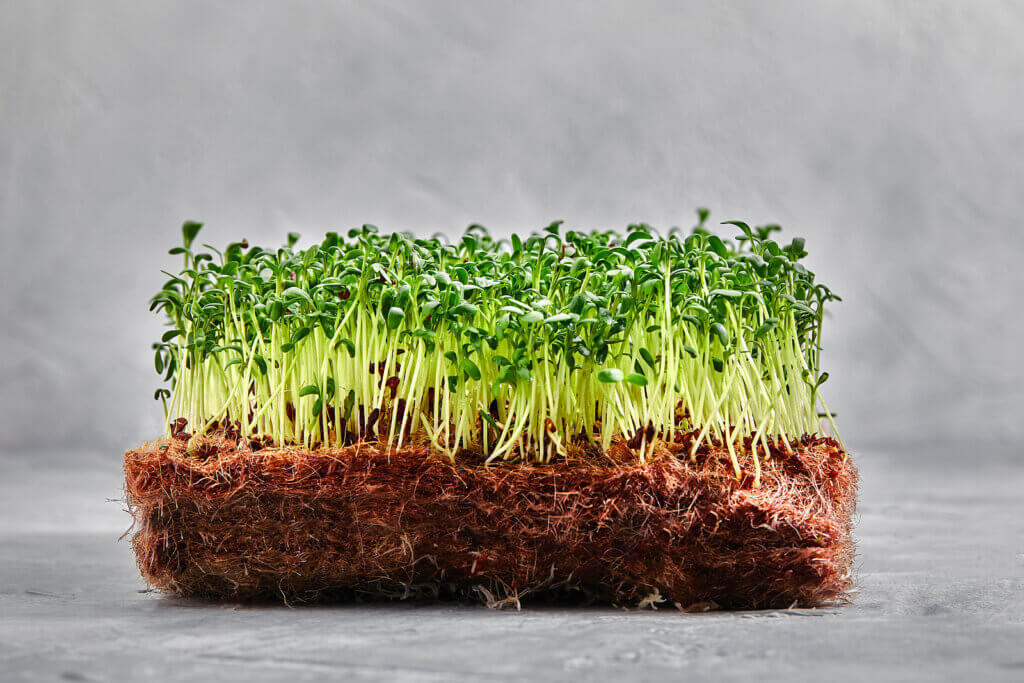
Steps to Grow Microgreens
Growing microgreens is a fascinating and rewarding journey that involves several intricate steps. Here, we provide a detailed breakdown of the process to help you cultivate these miniature marvels successfully:
Select Your Growing Container
Begin by carefully choosing a shallow tray or container with proper drainage holes. Ensuring cleanliness and sanitation is essential to prevent the growth of molds or harmful bacteria. Thoroughly clean and sterilize your container before use.
Prepare the Growing Medium
Fill your selected container with the chosen growing medium. It's crucial to moisten the medium evenly, but be cautious not to make it excessively saturated. The ideal moisture level promotes healthy seed germination and root development.
Sow the Seeds
Gently sprinkle the microgreen seeds evenly over the moistened medium, generously covering the surface. Microgreens are not particularly finicky about spacing, as they won't reach full maturity in their short growth cycle. However, try to distribute the seeds as evenly as possible to ensure uniform growth.
Cover and Provide Light
After sowing the seeds, lightly sprinkle a thin layer of the growing medium over them. This layer helps to anchor the seeds and maintain moisture. Next, enclose the container with plastic wrap or a transparent dome. Place it in a well-lit area with indirect sunlight or under suitable grow lights. The cover creates a greenhouse effect, which enhances humidity and promotes germination.
Watering
To maintain consistent moisture levels, use a spray bottle to mist the surface lightly. This prevents over-saturation and minimizes the risk of disturbing the delicate seeds. Continue misting as needed to keep the medium consistently moist.
Germination
In just a few days, you'll start to witness the seeds germinating. Tiny seedlings will emerge from the growing medium. When these seedlings reach a height of a couple of inches and develop their first true leaves (the second set of leaves), it's time to remove the cover. At this stage, they have established themselves and are ready to thrive in open air.
Continue to Water and Provide Light
As your microgreens continue to grow, it's crucial to ensure they receive sufficient light for healthy development. Monitor their moisture levels, and maintain even watering practices to avoid both under- and over-watering. Adequate light and moisture are key factors in achieving robust and flavorful microgreens.
Monitor and Harvest
Regularly observe your microgreens as they flourish. Typically, they will be ready for harvest within 1-2 weeks, although the exact timing can vary depending on the microgreen variety and environmental conditions. When the microgreens have reached the desired height, usually around 1-3 inches, and have developed a full set of true leaves, it's time to harvest. Snip them just above the soil line using sharp scissors or shears, ensuring a clean and precise cut.
Read also our post on LED Grow Lights for Microgreens
Caring for Your Microgreens
To ensure the optimal growth of your microgreens and enjoy a bountiful harvest, it's essential to provide diligent care throughout their development. Here are some detailed considerations for nurturing your microgreens:
- Watering: Maintaining the right moisture level is critical. Be cautious not to overwater, as excessive moisture can lead to mold or fungal issues. To prevent this, use a gentle watering can or a fine misting spray bottle to provide consistent moisture to the growing medium. Ensure that the soil remains evenly damp, not soggy. Remember that microgreens have shallow root systems, so it's essential to avoid waterlogging.
- Light: Adequate light is crucial for healthy microgreen growth. If you're using natural sunlight, place your trays or containers in a location with sufficient indirect sunlight. To promote even growth, rotate the trays periodically, as microgreens tend to lean toward the light source. If you're using grow lights, follow the manufacturer's recommendations for light duration and intensity based on the specific microgreen variety you're cultivating.
- Thinning: In cases where you've densely sown the seeds, overcrowding can occur as the seedlings grow. To ensure that each microgreen has enough space for healthy development, consider thinning them out. Carefully remove excess seedlings to maintain proper spacing between plants. This practice allows the remaining microgreens to access the necessary nutrients, light, and air circulation.
- Pest Control: Microgreens are not immune to pests, so it's important to keep a vigilant eye out for common invaders such as aphids and caterpillars. Regularly inspect your microgreens for any signs of infestation, such as holes in leaves or clusters of tiny insects. If you spot pests, remove them manually using tweezers or gently shake them off your microgreens. You can also employ natural pest control methods, such as introducing beneficial insects like ladybugs or using neem oil spray, to keep pests in check without the need for harsh chemicals.
See also our post on Microgreens Prices
Nutritional Benefits of Microgreens
Microgreens are not just a feast for the senses; they are also nutritional powerhouses that offer an impressive array of health benefits. Let's delve deeper into the wealth of nutrients they provide:
Rich in Vitamins
Microgreens are teeming with essential vitamins. They are particularly abundant in vitamins A, C, and K. Vitamin A supports healthy vision, while vitamin C is crucial for skin health and a strong immune system. Vitamin K plays a vital role in bone health and blood clotting.
High in Minerals
These tiny greens also contain a variety of essential minerals that are pivotal for various bodily functions. Microgreens provide calcium for strong bones, magnesium for muscle and nerve function, and iron for oxygen transport in the blood.
Antioxidant Powerhouse
Microgreens are a treasure trove of antioxidants. These compounds, including vitamins C and K, as well as carotenoids and polyphenols, act as defenders of your cells against damage caused by free radicals. By consuming microgreens regularly, you can bolster your body's natural defenses and support overall health.
Low in Calories
If you're mindful of your calorie intake, microgreens are an excellent choice. They are exceptionally low in calories, making them a guilt-free addition to your meals. You can enjoy their flavor and nutritional benefits without worrying about excess calorie consumption.
Dietary Fiber
Microgreens provide dietary fiber, which is essential for promoting healthy digestion. Fiber adds bulk to your diet, aiding in regular bowel movements and preventing constipation. Additionally, it creates a sensation of fullness, which can be beneficial for those seeking to manage their appetite and maintain a healthy weight.
Anti-Inflammatory Properties
Certain microgreens, such as broccoli and kale, are particularly renowned for their anti-inflammatory properties. This is due to their high levels of compounds like sulforaphane, which have been linked to reduced inflammation and a lower risk of chronic diseases.
Conclusion
In conclusion, my exploration of microgreen cultivation has been a deeply enriching and personal journey. These miniature greens, with their incredible flavors and nutritional value, have not only elevated my culinary experiences but also offered a unique connection to nature. Growing microgreens is more than just a hobby; it's a testament to the beauty of small wonders and the joy of nurturing life from tiny seeds.
Microgreens have become a staple in my kitchen, providing a burst of freshness and nutrition to my meals. Beyond their culinary appeal, I appreciate the sustainability they represent, as cultivating them at home aligns with my values of reducing waste and contributing to a greener planet. This journey has not only enriched my plate but also deepened my appreciation for the art and science of cultivating these delightful greens, making it a truly personal and fulfilling endeavor.
Sources
https://research.reading.ac.uk/research-blog/microgreens-the-health-giving-shoots-explained/
https://extension.purdue.edu/news/county/allen/2022/02/grow-microgreens-at-home.html

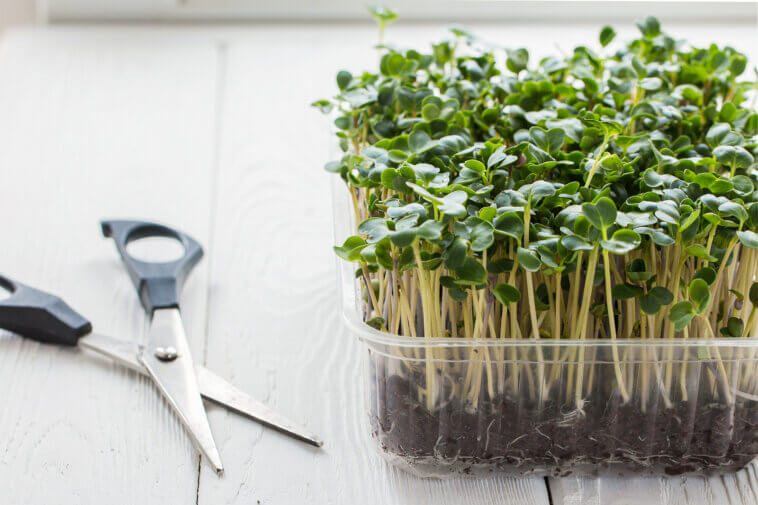
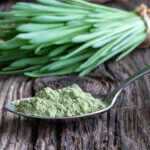
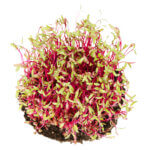
Comments
Loading…